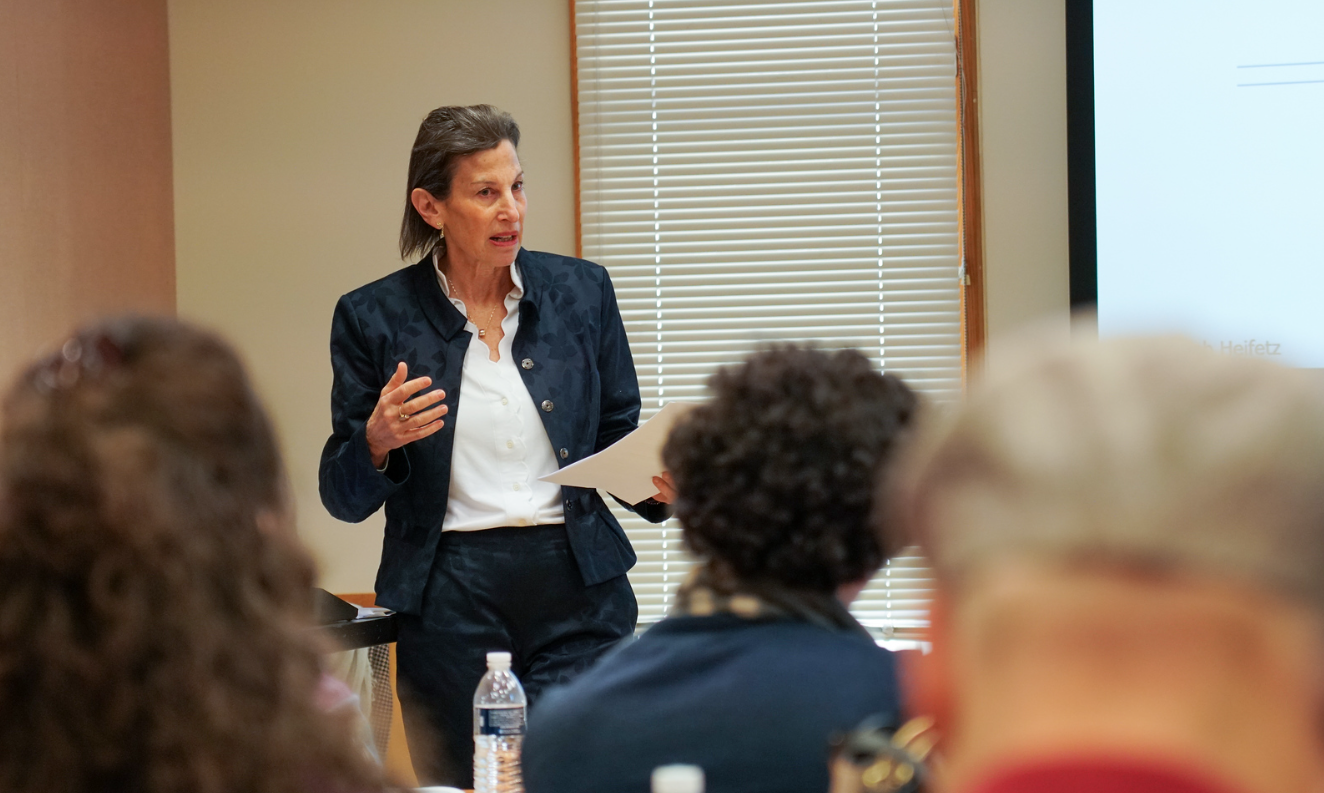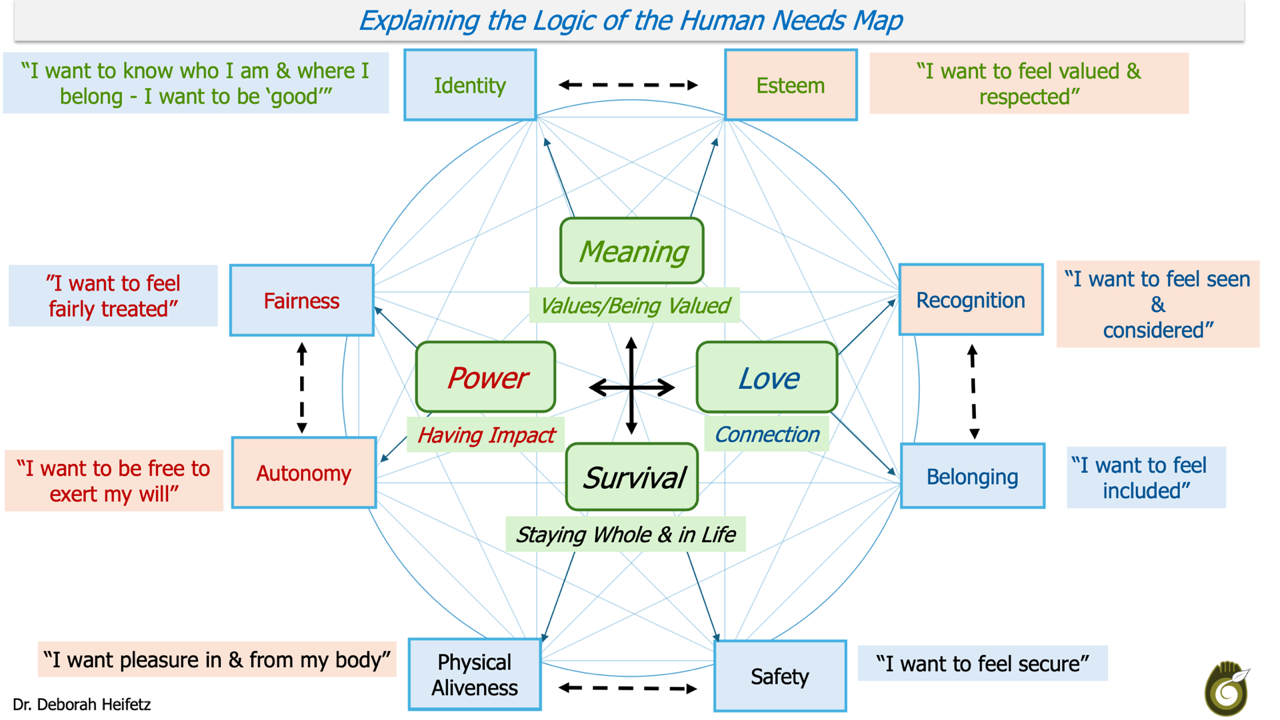Addressing the Roots of Conflict through “The Human Needs Map: A Tool for Peacebuilding”
The Council on Middle East Studies (CMES) hosted a colloquium at the end of March to shed light on a proposed new tool for global peacebuilding: the “Human Needs Map,” developed and presented by Dr. Deborah Heifetz. A social anthropologist, mediator, and professional facilitator, Heifetz introduced the systems-based model as a design principle for peacebuilding and a framework to understand how managing and negotiating needs and emotions play a major role.
To create this model, Heifetz drew on findings from her ethnographic study of Israeli-Palestinian security cooperation during the Oslo years (1994–2000), when Israel and the Palestine Liberation Organization (PLO) formalized a series of agreements intended to lay the groundwork for peace and fulfill their military commitment for what Heifetz defined as non-mediated peacekeeping.
The Human Needs Map functions as an MRI of our internal landscape—composed of emotions and needs—and can be used to better understand how individuals and groups operate, such as in the interactions between Palestinian and Israeli generals Heifetz observed during negotiations. The model identifies four “hungers,” or inner drives, that shape our experiences and actions: love, meaning, power, and survival. Each hunger includes two aspects, expressed through specific needs, and all of these needs interact dynamically.
Heifetz described her motivation for creating the Human Needs Map: “I saw that there was something missing,” she said. “I saw that there were cycles of violence that I wanted to break with a tool to fill the gap between emotions and human needs.”
During the lecture, Heifetz emphasized how a lack of curiosity perpetuates conflict.
“What triggers you into a reaction is invariably going to be some wound from either your personal or collective past,” she said. “And that trigger derails your capacity to think and feel and perceive everything else that is happening because it derails curiosity.”
Dina Roginsky, Senior Lector II of Modern Hebrew and the event coordinator, remarked: “Heifetz’s unique multidisciplinary approach combines expertise in anthropology, movement analysis, and conflict resolution—not only as theoretical concepts but also in real-life interventions, where she acts as a facilitator and mediator for peacebuilding.”
To expand on the ideas presented in her lecture, Heifetz led a movement workshop at the Schwarzman Center later that evening, exploring how the self and otherness can be embodied through expressive movement and role-playing.
“In these troubled times, both worldwide and locally, I feel that Heifetz’s CMES talk and her Schwarzman Center movement workshop provided some relief, hope, and better tools for coping with and changing our realities,” said Roginsky.
Heifetz shared that this work is “[her] small way of trying to heal human suffering.” The Human Needs Map, introduced at this colloquium, was published as A Map to Compassion in MIT’s Journal for Awareness-Based Systems Change.
This colloquium and workshop were made possible by CMES at the MacMillan Center, the Department of Near Eastern Languages and Civilizations, the Hebrew Program, the Schwarzman Center, and the Theater, Dance, and Performance Studies (TDPS) Program.
- Humanity

